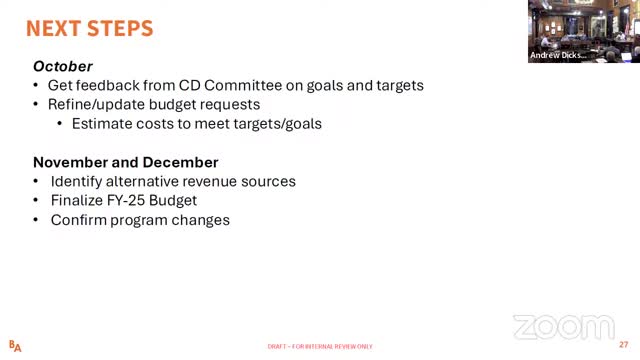Cities race to preserve affordable housing amid crisis
September 26, 2024 | Charleston City, Charleston County, South Carolina
This article was created by AI summarizing key points discussed. AI makes mistakes, so for full details and context, please refer to the video of the full meeting. Please report any errors so we can fix them. Report an error »

During a recent government meeting, officials discussed the pressing issue of affordable housing and the strategic placement of new developments to avoid exacerbating existing urban challenges. A key point raised was the need to balance development costs with long-term infrastructure implications, particularly as property prices vary significantly across different city areas.
Council members emphasized the importance of not only considering the immediate costs of new housing units but also the potential long-term expenses associated with inadequate infrastructure to support increased traffic and population density. The conversation highlighted that while cheaper land is available further from the city center, such developments could lead to greater costs in the future due to necessary infrastructure upgrades.
The discussion also touched on best practices from other cities across the nation, where extending the affordability periods of existing housing units has become a priority. This approach is seen as a cost-effective strategy to maintain affordable housing stock, as it is generally cheaper to preserve existing units than to construct new ones.
Furthermore, officials reviewed housing goals, noting that while there is a target to lease 7,500 new homes by 2030, current progress shows only 866 completed units, with many more stuck in the pipeline. The conversation clarified that the overall housing supply must increase to effectively address the affordable housing crisis, as a lack of supply could lead to rising prices, impacting lower-income residents the most.
The meeting underscored the critical need for a comprehensive strategy that not only focuses on the quantity of housing but also ensures that developments are sustainable and equitable for all residents.
Council members emphasized the importance of not only considering the immediate costs of new housing units but also the potential long-term expenses associated with inadequate infrastructure to support increased traffic and population density. The conversation highlighted that while cheaper land is available further from the city center, such developments could lead to greater costs in the future due to necessary infrastructure upgrades.
The discussion also touched on best practices from other cities across the nation, where extending the affordability periods of existing housing units has become a priority. This approach is seen as a cost-effective strategy to maintain affordable housing stock, as it is generally cheaper to preserve existing units than to construct new ones.
Furthermore, officials reviewed housing goals, noting that while there is a target to lease 7,500 new homes by 2030, current progress shows only 866 completed units, with many more stuck in the pipeline. The conversation clarified that the overall housing supply must increase to effectively address the affordable housing crisis, as a lack of supply could lead to rising prices, impacting lower-income residents the most.
The meeting underscored the critical need for a comprehensive strategy that not only focuses on the quantity of housing but also ensures that developments are sustainable and equitable for all residents.
View full meeting
This article is based on a recent meeting—watch the full video and explore the complete transcript for deeper insights into the discussion.
View full meeting